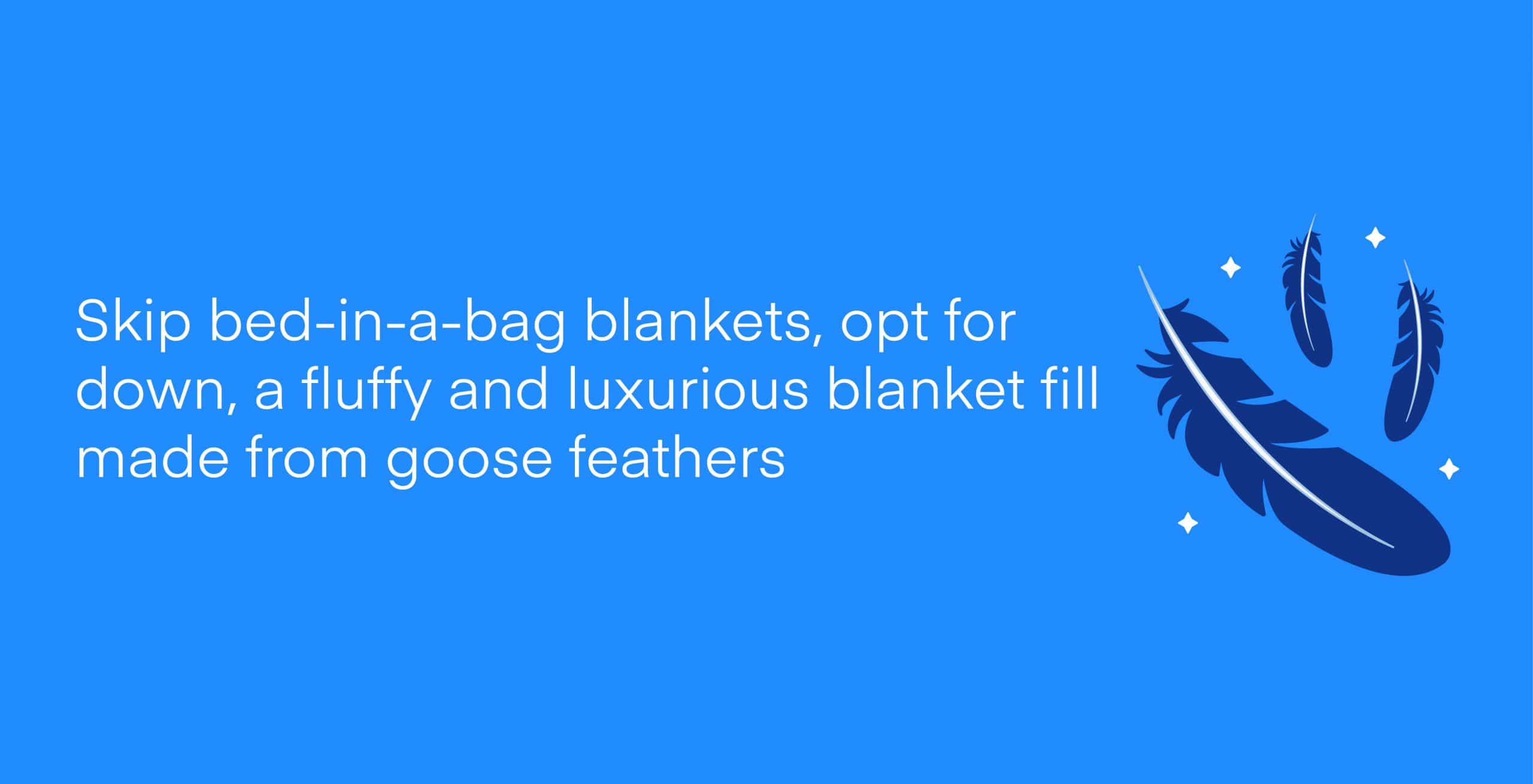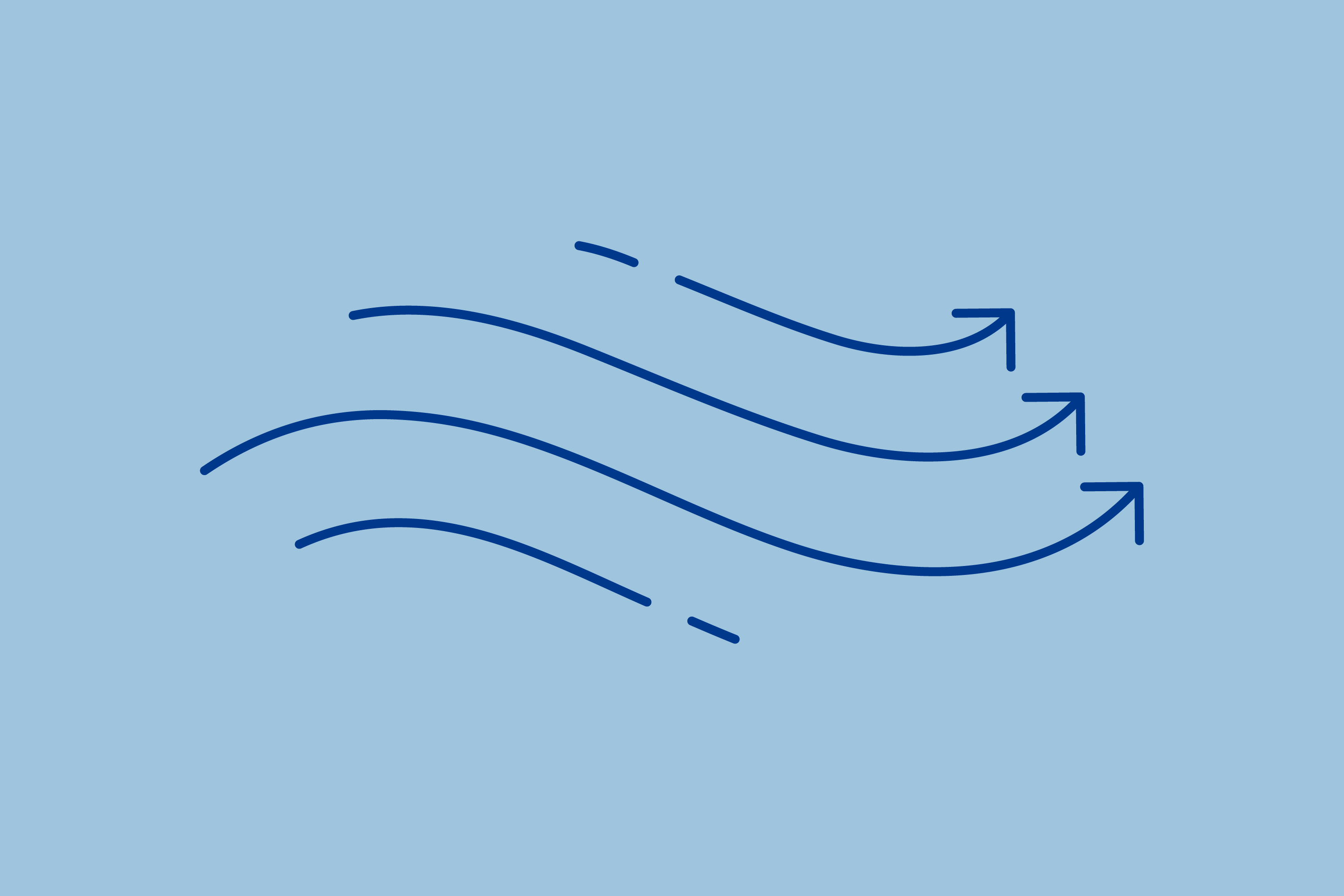Hotel rooms are the peak of luxury and comfort. Not only because you’re on a trip away from home, but also because of the high-end furniture and bedding in the rooms. Many agree that hotel mattresses, pillows, and bedsheets feel much more luxurious than a bed at home. However, you can achieve this level of comfort at home with the right bedding.
Just what types of sheets do hotels use, anyway? Lots of hotels use some variation of cotton for their bedsheets, typically a high thread count, long-staple cotton. Hotels use cotton sheets for a multitude of reasons, including cotton’s durability, softness, and breathability.
Cotton is also used in hypoallergenic sheets, so hotel guests aren’t at risk of allergic reactions or irritated skin. Plus, the material is machine-washable because hotel staff can’t dry-clean or hand wash hundreds of sheets every day.
Along with choosing hotel-quality sheets, consider changing your bedroom’s color palette and upgrading your mattress to make your room similar to a hotel.
Types of Hotel Sheets
Some types of sheets are more suited to luxurious, relaxing feels than others. Some of the most common materials in hotel sheets include high-quality cotton and linen.
Egyptian Cotton
Egyptian cotton sheets are highly popular since they’re luxurious and soft, yet lightweight and have great airflow. This cotton originated in Egypt and is hand-picked to prevent breaking the cotton fibers, resulting in a highly durable and extra-long-staple yarn for bed sheets.
Supima Cotton
Supima cotton is extra-long-staple cotton exclusively made in the USA. It’s popular in hotels since it’s smooth, long-lasting, and holds color very well compared to other fabrics. Since Supima has extra-long staples, the material is very lightweight and fine, yet still incredibly durable.
Cotton Sateen
Cotton sateen is a specific thread pattern of cotton, with a one-up, four-over weave. Hotels don’t use silk or satin since they’re very delicate, expensive, and can trigger allergies, but the sateen weave is a good alternative since it’s silky smooth, has a shiny sheen, and is excellent for hypoallergenic sheets. Also, sateen sheets are easy to care for, being machine-washable and wrinkle-resistant.
Cotton Percale
Cotton percale is an over-and-under weave type, resulting in a tight, flat weave with a matte finish. The percale weave is crisp and durable, similar to a dress shirt, but softens with every wash. Cotton percale sheets are very light and airy compared to cotton sateen, though both function similarly.
Linen
Linen is the only non-cotton type of sheets that hotels commonly use. Linen comes from the flax plant and is eco-friendly since it requires little water and energy to produce.
Still, linen can be expensive to harvest and produce. However, hotels use linen since it’s low-maintenance, hypoallergenic, and soft to the touch. Linen is also breathable and moisture-wicking, so the sheets won’t become discolored over time.
Hotel Sheet Thread Count
Thread count is the number of threads used per square inch of fabric. It’s only really relevant to cotton fabrics, and since hotel sheets are mainly cotton, it’s good to look for the right thread count. High thread count is better, but only to an extent.
Around 300 to 500 thread count is ideal for soft, durable, and breathable bed sheets. Lower thread counts feel rougher and can wear down quickly. You can technically find thread counts higher than this (upwards of 1000), but it’s a marketing gimmick and doesn’t add any additional softness or durability.
It’s impossible to squeeze 1000 high-quality threads into one square inch, so companies layer thin, weak threads together to boost the thread count as much as possible. While the thread count is technically higher, the threads used are low-quality and ultimately a waste of money. A good way to determine if sheets contain low-quality threads is if the thread count is super high, but the sheets are inexpensive, costing $50 or less.
The staple length of cotton sheets plays a larger role in the sheet quality and feel rather than the thread count. The staple length is the length of the fibers used in the threads. Long-staple and extra-long staple fibers are soft and supple, while short-staple fibers are rough and crisp. The best hotels use long-staple sheets since they’re long-lasting and plush.
How to Get Hotel-Quality Bed Sheets
If you want to achieve a hotel-like bed, it’s not only about the exact bed sheets you buy. It’s also about how you maintain them to improve their feel and quality.
Shop At Hospitality Bedding Manufacturers and Wholesalers
Rather than shopping from a department store, find bed sheets directly from hospitality bedding manufacturers or mattress wholesalers. Hospitality bedding manufacturers specialize in selling high-quality products for hotels, as opposed to a department store selling countless different products.
Shopping from wholesalers and manufacturers is also useful if you’re buying multiple sheet sets for your house or if you’re trying to find the same sheets certain hotel chains use.
Choose the Right Thread Count
Since most hotels use cotton bed sheets, be sure to check the thread count before purchasing. As mentioned earlier, while thread count isn’t the be-all and end-all to spotting hotel-style sheets, keep it in mind when browsing. 300 to 500 is the sweet spot for luxurious and durable cotton thread sheets.
Pick the Right Material
You need to pick silk to enjoy a luxury feel with your sheets. When it comes to long-lasting comfort, it’s best to opt for natural fabrics over synthetics. Cotton, bamboo, eucalyptus, and linen are all excellent choices.
- Cotton vs. Microfiber Sheets
- Lyocell vs. Cotton Sheets
- Cotton vs. Microfiber Sheets
- Bamboo vs. Cotton Sheets
- Bamboo vs. Tencel Sheets
Make Your Bed Every Day
Leaving your bed unmade and your sheets crumpled up wrinkles them and make them feel less crisp. Make your bed daily to keep your sheets smooth and your bedroom looking fresh, similar to a hotel room after room service has come through and cleaned up.
While it may seem like a lot at first to make your bed during a busy morning, it only takes a few steps to make the bed and have it look pristine the rest of the day.
Layer Your Sheets
Lots of hotels layer bed sheets for appearance and hygiene’s sake. They first lay a fitted sheet, then a flat sheet atop it, then the duvet or comforter, plus a duvet cover, and then another flat sheet on top of the duvet.
It’s a lot. However, adding the extra sheet on top of the blanket creates a pristine presentation and protects the blanket, especially since it’s not being washed as frequently as the other bedding.
Wash Your Sheets Frequently
Hotels wash their sheets and pillowcases hundreds of times a year since guests are constantly using them. When someone sweats in bed, the bed sheets wrinkle and start to feel a bit crusty. However, regular washing at hotels prevents the wrinkled, crusty feel, and softens bed sheets.
While it’s unrealistic to wash your bedsheets as frequently as hotels do, a weekly wash can provide similar effects.
Use a High-Quality Fabric Softener
Using a fabric softener when washing your bed sheets makes a big difference in how they feel. Fabric softeners not only soften your bedsheets, but also minimize wrinkles, remove odors, and reduce static. Liquid fabric softener is the most effective type of softener versus dryer sheets and dryer balls.
Don’t Hold Onto Old Sheets
If your bedsheets are sheets pilling, stained, or worn out, don’t continue trying to extend their lifespan since they’re beyond repair. Old sheets can be rough, discolored, and smell, nothing like a luxury hotel’s bedsheets. Instead, upgrade to new bedsheets to freshen up your bed and enhance your comfort.
If you don’t want to waste your previous sheets, think of ways you might upcycle old sheets around the home, such as converting them into reusable shopping bags.
Consider Amerisleep Sheets
Quick Guide: A 30-Second Summary
| Best Hotel Cotton Sheets | Amerisleep Cotton Sheets |
| Best Hotel Tencel Sheets | Amerisleep Tencel Sheets |
| Best Hotel Bamboo Sheets | Amerisleep Bamboo Sheets |
Tips to Make Your Bedroom Feel Like a Luxury Hotel
You don’t need to go on a vacation to sleep in luxury. Beyond getting a new sheet set, making simple changes to your bedroom can upgrade it from a modest bedroom to a sleep oasis. Hotel rooms are full of down, down alternatives, and feathers, since down feels like sleeping on a cloud, so keep this in mind when making changes to your bedroom.
Invest in a High-Quality Mattress
The best mattress is one of the most important factors for a comfortable, hotel-like experience at home. Hotels often use memory foam and hybrid mattresses for their durability and pressure-relieving capabilities.
Many hotels also opt for innerspring mattresses with a pillow top since they’re durable, but they’re not as comfortable. Innerspring mattresses usually contain thin pillow tops and don’t provide great pressure relief for sleepers. The beds also lack in motion isolation, so couples sharing a bed may end up disrupting each other.
Hotel mattresses are usually soft or medium, firmness-wise. However, you should choose the correct firmness for your sleeping position for optimal comfort and healthy spinal support:
- Back sleepers: Medium to medium-firm
- Side sleepers: Medium to soft
- Stomach sleepers: Medium-firm to firm
- Combo sleepers: Medium to medium-firm
Add a Feather Mattress Topper
If your mattress isn’t old enough to replace, or getting a new mattress is out of budget, consider getting a feather mattress topper. They’re less expensive than a new mattress but still upgrade your current mattress.
While feather mattress toppers aren’t very supportive, all-foam mattress toppers are. Yet their supportive feel doesn’t necessarily mean they’re firm, as they can be quite plush and provide a “cloud-like” feel similar to a hotel mattress.
Place Extra Pillows to Your Bed
Hotels always have lots of pillows on their beds—there are usually four standard rectangle pillows and then several decorative pillows, though there are many ways to arrange pillows. Not only do the extra pillows look nice, but they give sleepers the option to use a second pillow under their legs or between their knees for added comfort.
Hotels commonly use feather and down pillows since they’re lightweight and durable. Other high-quality pillow fills include memory foam and latex.
Use a Down Comforter or Duvet

Skip bed-in-a-bag blankets since they’re usually made from synthetic materials and aren’t high-quality. Instead, opt for down, a fluffy and luxurious blanket fill made from goose feathers. Down can be expensive, but it’s worth it for its softness and insulation, and many hotels use down in their duvets or comforters.
Plus, it’s an excellent material for hypoallergenic duvets, unless you have a feather allergy. Then we would suggest looking for a high-quality down alternative duvet.
Once you have the duvet picked out, look for a cover to slip over it. Consider also a rich coverlet, perhaps with a matelasse weave.
If you want to complete the classic look of the bed, you can complement the duvet or comforter with a bed skirt.
Stick to Neutral Colors
Hotels are usually full of neutral colors such as beige, gray, white, and tan. Extreme colors like pink and orange are fine in their own right, but not in a bedroom. Neutral-colored furniture, blankets, and decor are more inviting and tranquil, but they also feel more luxurious and minimalistic.
Of course, you can opt for relaxing cool colors if you want a touch more character than what neutral colors offer. We suggest light blues, purples, and greens as some of the best bedroom colors or sleep.
FAQs
Why do hotels use white bedsheets and towels?
Hotels use white bedding and sheets for a multitude of reasons. For starters, white fabrics show hotel guests the room is clean and unstained because if the towels or bedding were dirty, it’d be obvious. Knowing your room is clean provides peace of mind and a sense of luxury. Also, white is easy to wash and doesn’t fade compared to colored sheets.
Finally, white matches anything, so it’s easy for hotels to use white bedding to go with the rest of the furniture in the room.
How do hotels keep their towels and bedding so white?
Hotels have different maintenance procedures for their towels and bedding, but it includes frequent washing. Typically, hotel staff start by treating the items for stains—heavily stained towels and sheets are boiled or soaked in hot water with baking soda and laundry detergent. Next, the items go through three separate wash cycles with cold water. The first wash is with laundry detergent, then fabric softener, and finally with bleach to bring out the whiteness.
How much do hotel bed sheets cost?
The average cost of hotel bed sheets is around $200, depending on its style, quality, and size. Some hotel bed sheets cost under $100, while others are over $400, though $200 is a good sweet spot for durable and soft sheets without being overly expensive.
How do you know if a hotel room is clean?
While we all hope no hotel room is dirty, it’s normal to wonder if hotel sheets and towels are clean. There’s a couple of indicators for whether or not your hotel room is sanitary.
Consider if the lobby is clean. While no, you’re not staying in the lobby, it does indicate how much the staff cares about maintaining their hotel’s appearance as it’s the guest’s first impression.
Inside a hotel room, check the bed for wrinkles—wrinkles suggest someone has slept on the bed and it hasn’t been washed yet. Also, look under the blankets for loose hair or debris.
Scour the bathroom for black and green grout stains, soap scum, hair stuck in the shower drain, and stains inside the toilet. If you find your room is dirty, you can request that housekeeping clean it properly.
How long do hotel bed sheets last?
Hotel bed sheets are meant to last as long as possible. After all, so many people go through the hotel and sleep on their beds. At home, you can make luxury bed sheets last upwards of ten years with the proper care and maintenance.
Conclusion
Most hotel bed sheets are high-quality cotton, though you’ll occasionally find hotel bed sheets made from linen. Look for durable and soft cotton, like Egyptian and Supima, and keep up with cleaning your sheets and bed so your bedroom feels like a luxury hotel.
While you can find high-quality bed sheets on your own, some hotels even sell their own mattresses, pillows, and sheet sets, in case you’re trying to replicate your favorite hotel.
About the author
Mitchell Tollsen is a graduate student and a freelance writer who’s contributed to the Early Bird blog for three years. Mitchell’s always been fascinated by the science of sleep and the restorative processes our bodies undergo when at rest. The self-titled “Sleep Expert” is always looking for ways to improve his shut-eye, and throughout the years has implemented numerous lifestyle changes and tried dozens of sleep-promoting gadgets to determine the best ways to truly get better rest.
View all posts





